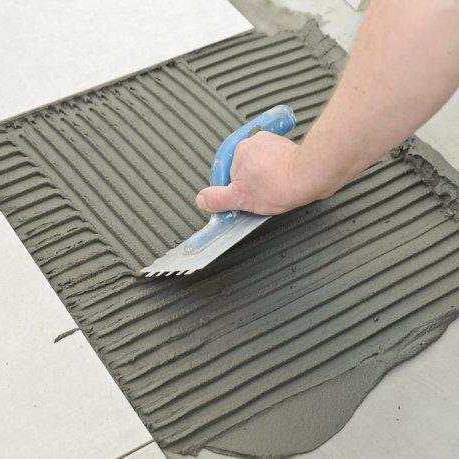
Oct . 07, 2025 10:10 Back to list
HPMC for Tile Adhesive: How to Boost Bond & Workability?
Inside the Mix: HPMC That Makes Tile Adhesives Stick (and Stay)
When contractors ask me what quietly decides whether a tile job feels “pro,” I point to hpmc for tile adhesive. It’s the behind-the-scenes polymer that keeps water where it should be, builds creamy workability, and extends open time—especially with finicky porcelain or large-format slabs. I’ve toured plants, mixed buckets in hot Jobsite sun, and—honestly—seen both magic and mess. The difference is how the HPMC is engineered and dosed.
Snapshot: TILE BONDING ADDITIVES (JZ Chemical)
Origin: NO.1 BUILDING, TECHNOLOGY CERTER, HIGH-TECH ZONE, SHIJIAZHUANG, HEBEI, CHINA. Product type: Mixture for exclusive usage (launched 2019-09-18). Many customers say the flow is “buttery” without killing slip resistance.

Why pros care (2025 trends)
- Large-format & thin porcelain panels need higher water retention and thixotropy.
- Hot climates demand extended open time (EN 1346) without slump.
- Lightweight, dust-reduced mortars are rising; polymers must disperse fast.
- Spec-driven work: EN 12004 / ISO 13007 C1/C2, T, E compliance is table stakes.
Typical specifications (mix-ready HPMC blend)
| Parameter | Spec (≈, real-world use may vary) |
|---|---|
| Apparent viscosity (2% in H2O, Brookfield) | 35,000–75,000 mPa·s |
| Methoxy / Hydroxypropyl content | 19–24% / 4–12% |
| Moisture / Ash | ≤5% / ≤5% |
| pH (1% solution) | 6.0–8.5 |
| Particle size | ≥98% through 80 mesh |
| Recommended dosage in cement mortar | 0.2–0.6% by weight of dry mix |
| Performance impact | Water retention ≥95%; open time +20–30 min; slip ≤0.5 mm |
From bag to wall: process flow I’ve seen work
- Materials: cement (CEM I/II), graded silica sand, polymer resin, hpmc for tile adhesive, defoamer, cellulose fibers (optional).
- Dry blending: 6–10 minutes high-shear; HPMC pre-mix with fine sand to prevent fisheyes.
- Jobsite mix: water first, powder next; 3–5 minutes mix, 2-minute rest, quick re-mix.
- Testing: EN 1346 (open time), EN 1308 (slip), EN 1348 (tensile adhesion), ISO 13007 classification.
- Service life: installed systems ≈10–25 years depending on substrate, movement, moisture.
Applications and advantages
- Porcelain, stone, and large-format tiles on walls and floors (including heated slabs).
- Hot/dry climates where hpmc for tile adhesive must keep water in the mortar.
- Advantages: creamy spread, extended adjustability, reduced slip, better tensile adhesion.
Vendor snapshot and comparison
| Vendor | Viscosity range | Docs/Certs | Lead time | Price index |
|---|---|---|---|---|
| JZ Chemical (CN) – TILE BONDING ADDITIVES | 35k–75k mPa·s | ISO 9001, REACH, COA; EN 12004 test data | ≈2–4 weeks | $$ |
| European Brand A | 40k–60k mPa·s | ISO 9001/14001; full EN/ISO dossiers | ≈3–6 weeks | $$$ |
| Budget Supplier B | 20k–50k mPa·s | Basic COA; limited testing | ≈1–3 weeks | $ |
Data indicative; batch and climate conditions will change outcomes.
Customization (where the magic happens)
- Viscosity grades tailored for wall vs. floor mortars.
- Surface-treated HPMC for faster wet-out and low dust.
- Add-on thixotropy boosters for “T” (reduced slip) mortars.
- Co-formulation with redispersible polymer for C2 performance.
Field notes and feedback
Case: Gulf region high-rise, south façade, 600×1200 mm porcelain. Switching to hpmc for tile adhesive blend raised open time by ≈25 minutes and kept slip under 0.5 mm (EN 1308). Installer quote: “It finally held the big boys on the wall—no battens.” Another job in a cool, damp climate saw tensile adhesion after 28 days at 1.4 MPa (EN 1348). Not bad.
Compliance and documentation
- Targets EN 12004 / ISO 13007 classifications (C1/C2, T, E).
- Routine tests: EN 1346 (open time), EN 1308 (slip), EN 1348 (tensile adhesion).
- Quality systems: ISO 9001; environmental: ISO 14001 (where applicable).
Always validate dosage in your local cement-sand system; lab success needs on-site confirmation. I guess that’s the part everyone wants to skip—don’t.
Authoritative citations
- EN 12004: Adhesives for tiles—Definitions and specifications.
- ISO 13007-1/2: Ceramic tile adhesives—Terms, specifications, test methods.
- EN 1346: Determination of open time; EN 1308: Determination of slip; EN 1348: Tensile adhesion.
- ISO 9001 & ISO 14001: Quality and environmental management standards.
-
Cellulose Ether | High Purity, Fast Hydration, Stable Flow
NewsNov.17,2025
-
Cellosize HEC Thickener – High Purity, Fast-Dissolving
NewsNov.17,2025
-
Cellulose Ether: High-Purity Liquid Thickener, HEC Cellulose
NewsNov.17,2025
-
VAE Powder (RDP): High Adhesion & Flexibility for Mortars
NewsNov.17,2025
-
Cellulose Ether: High Purity, Fast-Dissolving, Stable Flow
NewsNov.17,2025
-
Cellosize HEC Thickener – High Purity, Fast-Dissolving
NewsNov.11,2025







